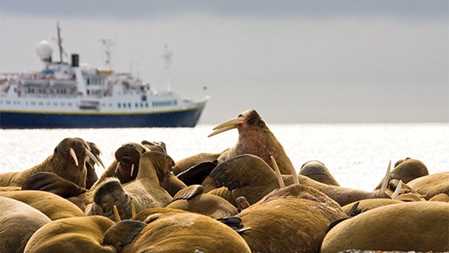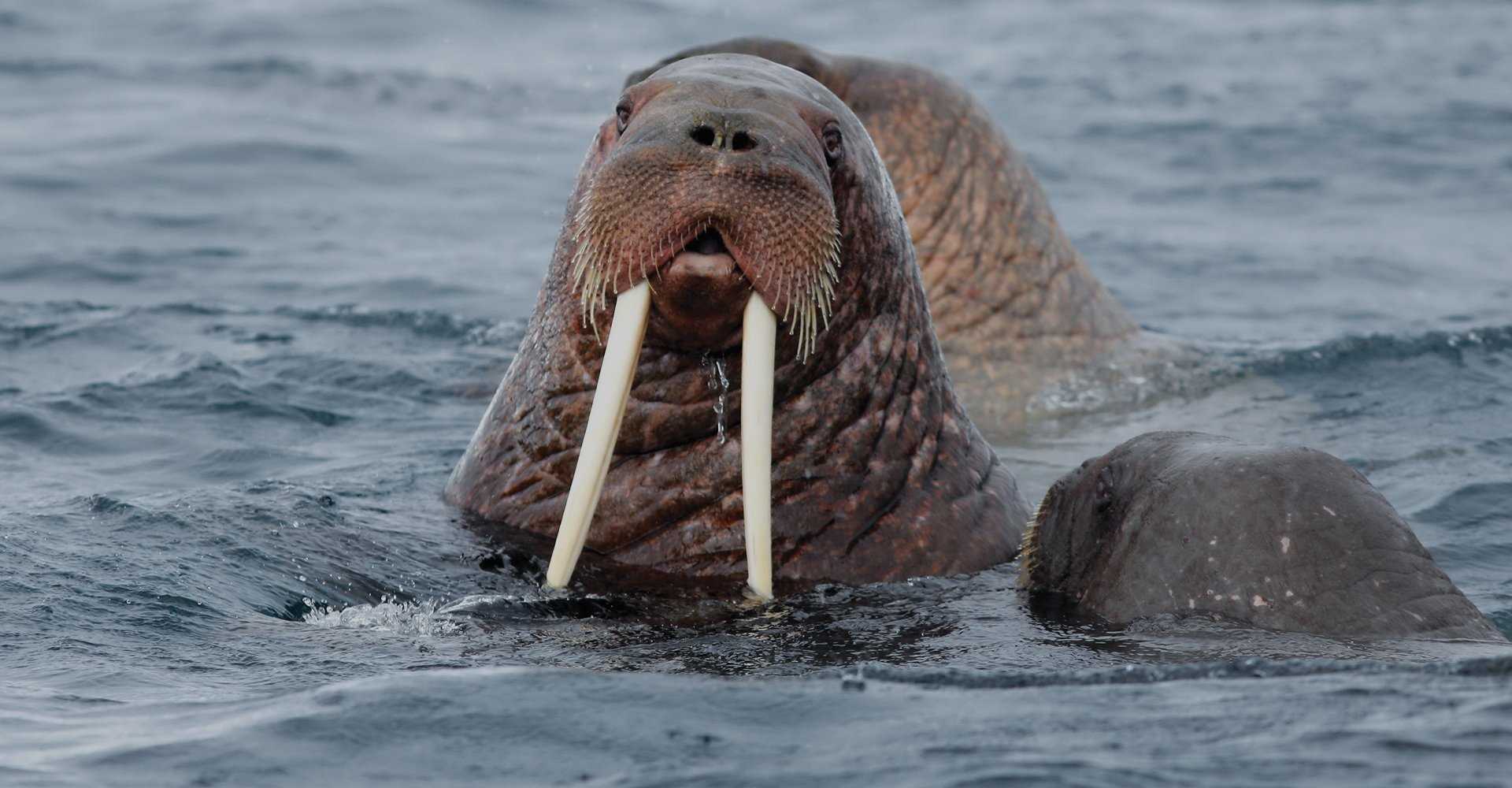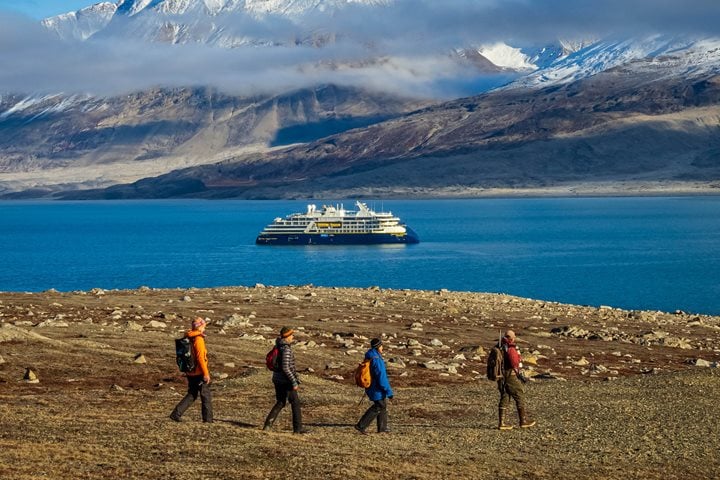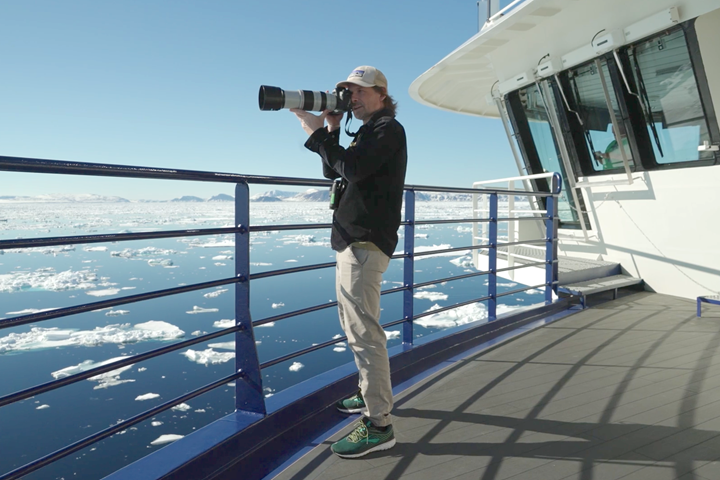Call +1.800.397.3348 or contact your travel advisor
Get to know these tooth-walking seahorses
Order: Carnivora Family: Odobenidae Genus: Odobenus Species: O. rosmarus Range: Pacific walrus: Bering Sea as far south as Bristol Bay, and the Chukchi, Beaufort, East Siberian and Laptev Seas. Atlantic walrus: Canadian Arctic, across Greenland, Svalbard, and the western part of Arctic Russia. Population: Unknown but estimated at 225,000 IUCN Red List Status: Vulnerable How to Spot Them: Two long ivory tusks; hundreds of short, stiff whiskers; thick brown to pink wrinkly hide; flat oar-like flippers; males have large coarse bumps along the back and shoulder; can reach up to 12 feet long and 2 tons.

Find out how the walrus earned the nickname "tooth-walking sea horse."
Read more
You might hear their boisterous grunts, snorts, and bellows before you actually spot them, but when you do it’s a moment of exhilarating spectacle. Along with the polar bear, the walrus is one of the Arctic’s most emblematic species—and witnessing it in its natural habitat does not disappoint. Blubbery and broad, these mustachioed giants are almost as wide as they are tall, clocking in as the second largest pinnipeds after elephant seals. Add in those prominent curved tusks—which continue to grow throughout their lives—and the comical way they use their flippers to scratch an itch and these guys are truly a sight to behold. Get Inspired By Photos, Videos, Webinars, Stories, And Exclusive Offers. Sign Up
Walruses are divided into two subspecies—Pacific and Atlantic—based on the waters where they congregate. As social animals, walruses find comfort in large numbers so they are often found in herds, stretched out on ice floes or gathered in impressive haul-outs on shore.
Watch the video above to learn more about these pointy-toothed pinnipeds.




